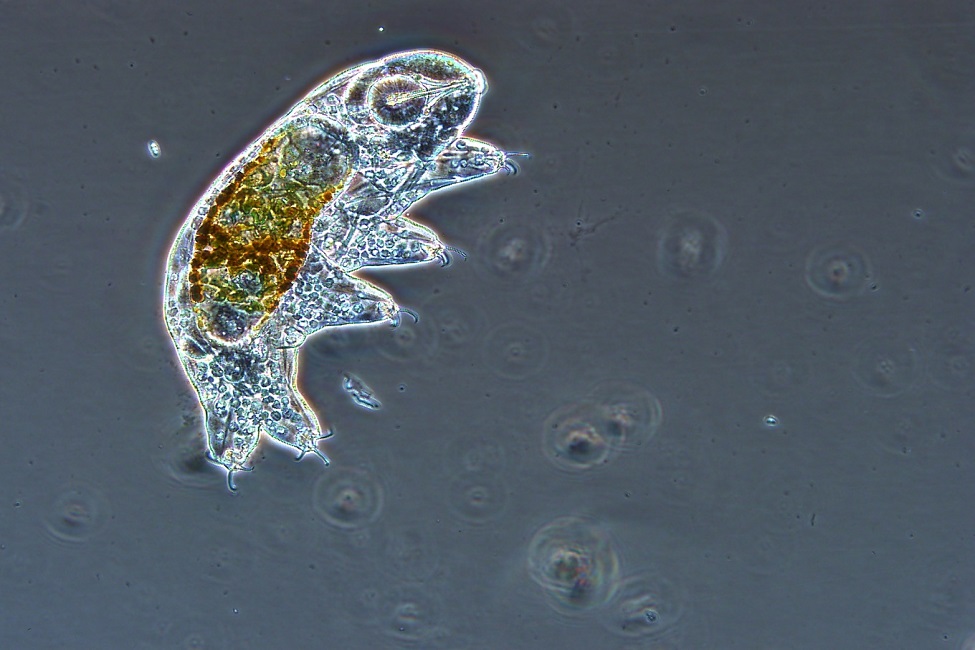Microbiologist Gets Creative Using Instagram

Pictured is Tardigrade or 'water bear,' a microbial eukaryote, magnified 400 times. (Photo credit: Hunter N. Hines @microbialecology)
With a big push to get a global audience – young and old – excited about science, a Ph.D. student at Florida Atlantic University’s Harbor Branch Oceanographic Institute is thinking outside-the-box. Hunter Hines has turned to the social media platform of Instagram to engage audiences in scientific exchange across the world and has come up with the right formula for success. He is encouraging other scientists to follow suit.
Hines, lead author and a Ph.D. student who conducted research in the McCarthy Laboratory at FAU’s Harbor Branch, along with Sally Warring, Ph.D., a postdoctoral researcher at the American Museum of Natural History in New York, published an article in Nature “Careers Community” to share their experience and knowledge about using social media in microbiology outreach at a global scale. Microbiology is the study of all living things that are too small to see with the naked eye.
Hines’ Instagram account @microbialecology currently has 55,000 followers and at the end of 2018, his account received more than 1.4 million views in a single week. Around that same time, his posts also went viral and were picked up by more than 30 international outlets including National Geographic Russia.
The authors advise scientists to look at Instagram as a microphone for amplifying newly published research and current projects in real time to a much wider audience than conventional scientific publishing can manage. They note that Instagram provides an outstanding platform for scientists to share imagery from the lab, field, microscope, data figures and selfies in interesting and informative ways. Activities on their own Instagram accounts have led to ongoing collaborations with artists, filmmakers, industry professionals, community groups, start-ups and nonprofit organizations from all over the world.
While in graduate school, Hines and Warring both created Instagram accounts to share photos and video clips of microorganisms they encountered through their research. They wanted to share the wonder of what they saw through the microscope. They note that it is nearly impossible to predict what will go viral. Keeping track of the impact of their posts has provided them with experience on how to communicate microbiology with a tone that is understandable and relaxed, yet informative.
Scientists produce immense amounts of data in many different forms, and Instagram is an effective platform to share this information with a wide audience. Hines and Warring say that their goal is to stimulate interest and conversation rather than to be conclusive.
The authors’ time on Instagram has left them thinking about the great public interest in the daily workings of science. They stress that many researchers could find a following for their work, from audiences with specialist-level interest to those with no familiarity with science.
They have found that questions can lead to general conversations about the basic biology of a cell, the nature of consciousness and intelligent life, and the role of climate change and pollution in shaping ecosystems. The more engaged scientists are with their followers, the more they will get back.
The article, “How We Use Instagram to Communicate Microbiology to the Public,” is available at www.nature.com/articles/d41586-019-00493-3 (Nature: doi: 10.1038/d41586-019-00493-3).
Hines' Instagram account is @microbialecology and his website is www.instagram.com/microbialecology/.
-FAU-
Tags: community | students | research | harbor branch | science